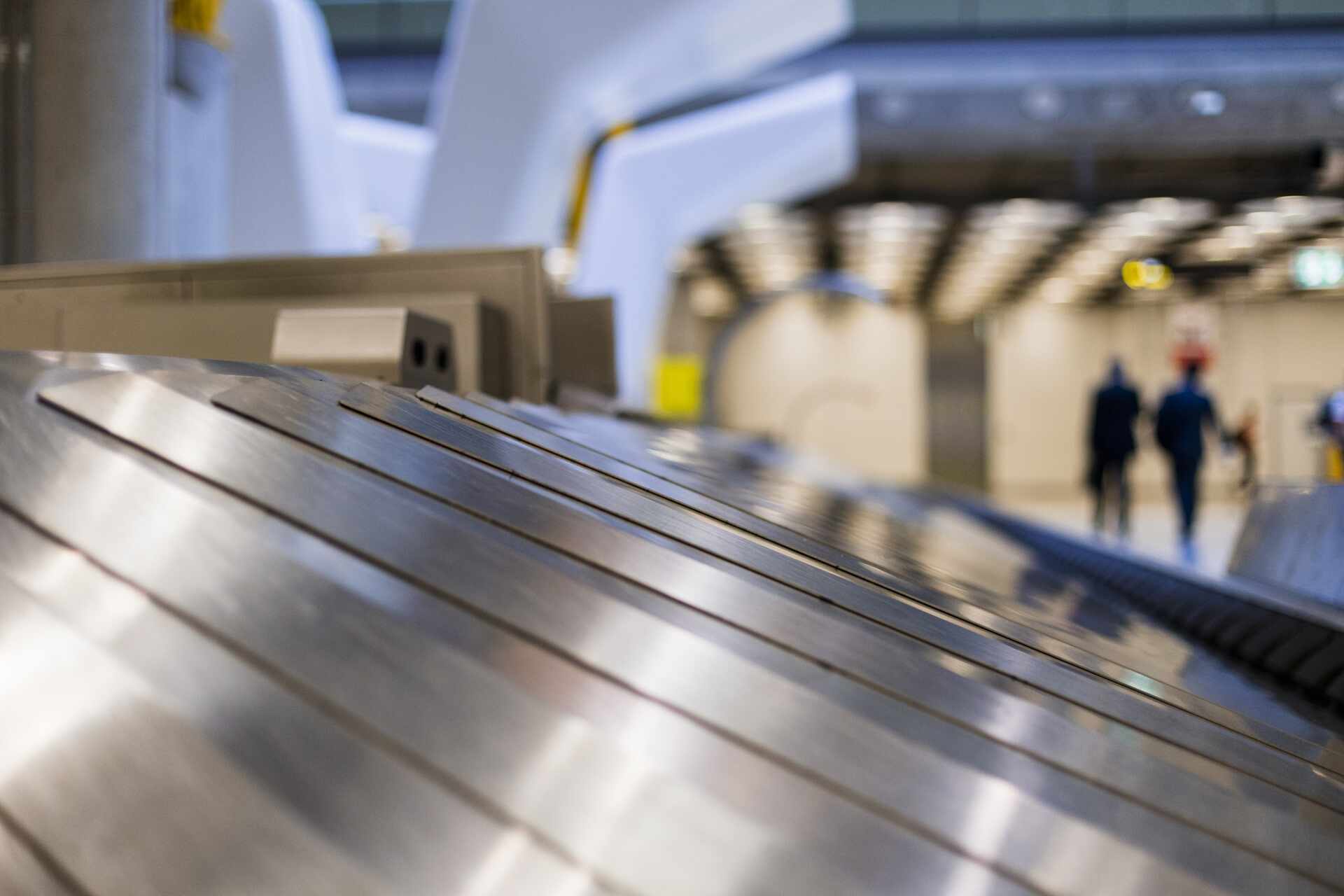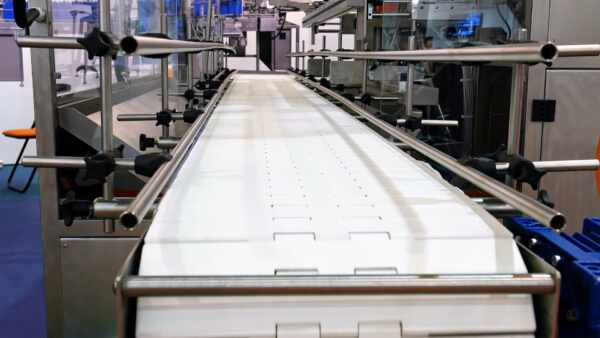In the dynamic world of manufacturing operations, innovation and adaptability are key to success. With diverse materials and requirements across different industries, selecting the appropriate conveyor belt system presents a challenge that can significantly impact the efficiency and productivity of your operations. Among the various options available, steel conveyor belts have emerged as a strong and robust solution, offering a multitude of benefits and applications in various sectors.
While diverse conveyor belt materials cater to various needs and applications, steel belts offer a unique set of advantages, including exceptional heat resistance, durability, and sanitation. These qualities make them an ideal choice for industries such as food processing, pharmaceuticals, electronics, and even automotive manufacturing. As you explore the comprehensive range of steel conveyor belts available on the market, understanding the different types, features, and applications can assist you in identifying the most suitable solution for your unique needs.
Join us on this journey as we unravel the complexity of steel conveyor belts, providing you with valuable insights and expert guidance on their selection, implementation, and maintenance. By harnessing the power of steel conveyor belts, you can significantly enhance the efficiency and reliability of your manufacturing operation, paving the way for success and growth in today’s competitive market landscape.
1. Types of Steel Conveyor Belts and Their Applications
Steel conveyor belts come in a variety of types to accommodate diverse applications and requirements across numerous industries. Let’s explore some common types of steel conveyor belts and their primary applications:
- Flat wire belts: Their rigid and flat surface makes them ideal for heavy-duty operations, such as glass production and metal stamping. They can endure high levels of heat and have excellent washdown capabilities.
- Plate link belts: Comprising individual hinged metal plates, plate link belts are ideal for demanding industries like automotive manufacturing due to their high strength and durability.
- Mesh belts: Stainless steel mesh belts feature a balanced weave of intertwined metal wires, making them well-suited for industries such as food processing, where a combination of heat resistance, drainage, and sanitation is required.
2. Advantages of Steel Conveyor Belts
Opting for a steel conveyor belt system can greatly enhance the performance, efficiency, and longevity of your manufacturing operations, thanks to their unique properties, including the following:
- Heat resistance: Steel conveyor belts can operate under extreme temperatures, making them suitable for industries like metalworking, glass production, and food processing.
- Durability and strength: Given their metal construction, steel belts can withstand heavy loads and support high-traffic operations without sustaining significant wear or damage.
- Sanitation and hygiene: Stainless steel belts are non-porous, making them resistant to bacterial growth and easy to clean, a vital consideration in the food and pharmaceutical industries.
3. Steel Conveyor Belt Maintenance Tips
To ensure the smooth operation and longevity of your steel conveyor belt, it’s essential to adhere to proper maintenance and handling practices, such as the following:
- Regular inspections: Inspect your steel conveyor belt for signs of wear, damage, or debris accumulation. Address any issues promptly to minimise downtime and maintain peak performance.
- Adequate lubrication: Proper lubrication of your steel conveyor belt’s components prevents excessive friction and wear, prolonging the system’s lifespan.
- Expert guidance and support: Consult with experienced professionals for maintenance advice and support, ensuring that your conveyor system is maintained according to industry standards and manufacturer recommendations.
4. How to Choose the Right Steel Conveyor Belt
To select the most appropriate steel conveyor belt for your manufacturing operations, consider the following factors:
- Material compatibility: Ensure that the conveyor belt material is suitable for the products or materials being processed, withstanding the specific operating conditions of your industry.
- Load carrying capacity: Select a steel conveyor belt that can handle the weight and dimensions of the products being transported without compromising reliability and efficiency.
- Customisation options: Steel conveyor belts offer a range of customisation options, such as plate thickness, link size, and edge treatments, to tailor the belt to your specific needs.
5. Emerging Trends and Innovations in Steel Conveyor Belt Technology
The realm of steel conveyor belts continues to evolve with advancements in technology and innovative engineering solutions. Keeping abreast of these emerging trends can provide valuable insights into optimising your manufacturing operations. Here are some noteworthy developments in steel conveyor belt technology:
- Modular designs: Manufacturers are increasingly offering modular steel conveyor belt systems, allowing for greater flexibility and scalability in adapting to changing production needs. These modular designs enable easy customisation, expansion, and reconfiguration of conveyor systems, facilitating efficient workflow adjustments.
- Advanced materials: Ongoing research and development efforts have led to the introduction of new materials and coatings for steel conveyor belts, enhancing their performance and durability. Innovations such as high-performance polymers, ceramic coatings, and composite materials offer improved wear resistance, corrosion protection, and temperature tolerance, expanding the range of applications for steel belts.
- Integration with IoT and automation: The integration of steel conveyor belt systems with Internet of Things (IoT) technology and automation solutions enables real-time monitoring, predictive maintenance, and optimisation of conveyor operations. Sensors, data analytics, and machine learning algorithms provide insights into belt performance, wear patterns, and operational efficiency, allowing for proactive maintenance and continuous improvement.
- Energy-efficient designs: With a growing emphasis on sustainability and energy conservation, manufacturers are developing energy-efficient designs for steel conveyor belts. Features such as low-friction coatings, optimised drive systems, and regenerative braking mechanisms help minimise energy consumption while maximising throughput and productivity.
- Digital twins and virtual simulation: Digital twin technology allows for the creation of virtual replicas of steel conveyor belt systems, enabling predictive modelling, simulation, and optimisation of performance parameters. By simulating various operating conditions and scenarios, manufacturers can fine-tune conveyor designs, mitigate risks, and optimise resource allocation before implementation in real-world settings.
Conclusion
As we’ve explored in this blog post, steel conveyor belts are a versatile and robust solution for various industries, offering a range of advantages, including extreme heat resistance, durability, and sanitation. By understanding the different types, applications, and maintenance requirements of steel conveyor belts, you can make informed decisions that significantly enhance the performance and longevity of your manufacturing operations.
Change Parts Pty Ltd is here to provide tailored advice and support, ensuring that your choice of conveyor belt system aligns perfectly with your unique requirements. Get in touch with us today to learn more about our services and how we can help enhance the efficiency and reliability of your operations.




